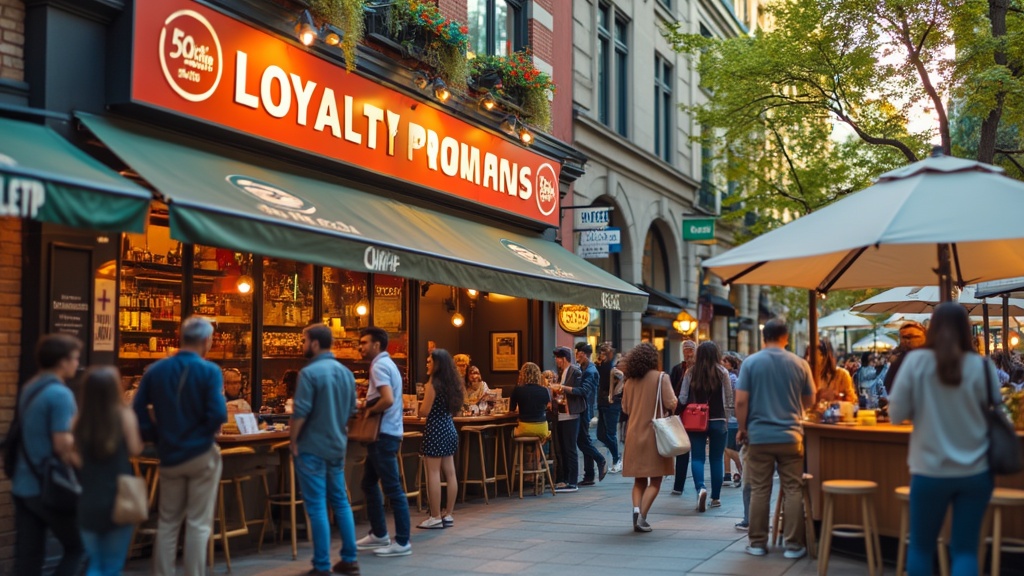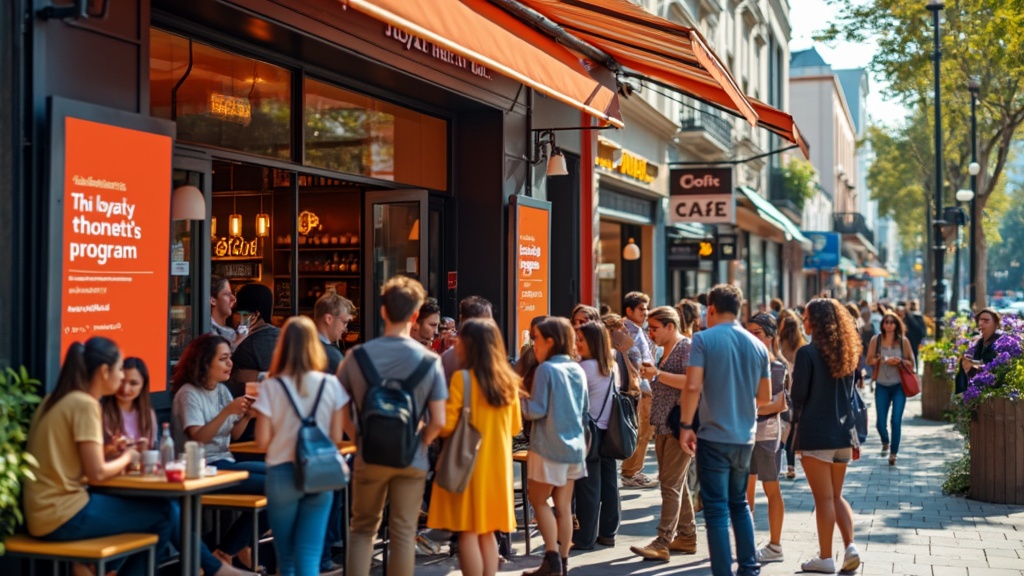Innovative customer loyalty programs can revolutionize how businesses connect with their consumers. By offering personalized rewards, brands significantly increase repeat buying and enhance customer satisfaction.
Research indicates that effective loyalty programs can boost repeat purchases by as much as 50%.
Implementing engaging incentive programs helps foster a stronger relationship between brands and customers, encouraging them to return.
Explore various options such as tiered incentives or exclusive discounts to create a lasting impact on customer retention and loyalty.
Benefits of Loyalty Programs for Customers
Exceptional loyalty programs provide customers with numerous benefits that enhance their experience. These loyalty benefits not only promote a sense of value but also deepen the emotional connection between customers and brands.
Businesses can implement exclusive offers and tailored rewards that resonate with consumer preferences.
Key Advantages of Customer Loyalty Programs
- Engagement Tactics: Programs that offer personalized rewards result in greater user engagement, driving more frequent interactions.
- Increased Satisfaction: By recognizing customer insights, businesses enhance the overall user experience.
- Brand Advocacy: Successful loyalty systems foster community building and encourage brand advocacy through referral incentives.
- Retention Strategy: Implementing effective retention strategies can lead to higher purchase frequency and long-term customer relationships.
For instance, a program like Starbucks Rewards encourages brand advocacy by rewarding users for their purchasing behavior, effectively increasing customer retention.
These advantages lead to improved customer satisfaction, fostering a long-term bond between brands and their audience. As businesses leverage data analytics, they can track transaction history and tailor future offers for more effective engagement programs.

How To Create A Rewards System
Designing an effective rewards system involves a thoughtful process that aligns with customer preferences and business goals. First, identify customer needs by conducting surveys to uncover appealing incentives that resonate with target audiences.
Next, define objectives clearly, focusing on aims like improved customer retention and engagement.
Subsequently, choose a tier structure that motivates progression—consider implementing silver, gold, and platinum levels to foster greater customer engagement.
In addition, implement point accumulation strategies where customers earn points per dollar spent or for referrals that attract new customers.
Develop reward options that include diverse incentives such as exclusive products, discount offers, or experience enhancements to maintain interest. Lastly, launch and communicate the program effectively across multiple channels to inform customers about the benefits.
A case study of Starbucks demonstrates how a well-implemented rewards system not only enhances brand loyalty but also boosts customer satisfaction.
Effective Engagement Tactics For Loyalty
Deepening connections with loyal customers requires innovative engagement tactics that enhance their overall experience. For instance, personalized communication plays an essential role; tailoring promotions using data analytics maintains customer engagement and provides relevant information.
Additionally, exclusive access to new products cultivates a sense of belonging among customers, while social media interaction facilitates real-time engagement, encouraging user-generated content that showcases brand advocacy.
Integrating Feedback Loops
Implementing customer feedback loops is essential for understanding purchasing behavior; actively seeking feedback through surveys helps refine engagement strategies to better suit customer preferences.
By integrating insights from these feedback loops, brands can enhance the overall customer journey and strengthen emotional connections that drive loyalty.
Practical tips include:.
- Encouraging customers to share their thoughts through simple feedback surveys after purchase.
- Utilizing data analytics to track and respond to customer sentiments, improving the user experience.
- Regularly updating customers about program changes to maintain transparency and trust.
Implementing these tactics effectively can significantly improve customer loyalty and retention, leading to enhanced engagement programs that resonate with the targeted audience.
Rewards Systems and Customer Engagement
- Companies with effective rewards systems can see a customer retention increase of up to 30%.
- Personalized promotions can lead to a 20% increase in customer engagement rates.
- Brands that actively seek customer feedback can improve their products and services, resulting in a 15% higher customer satisfaction rate.
- Exclusive access to new products can increase customer loyalty by creating a sense of community and belonging.
Developing A Retention Strategy That Works
Creating an effective retention strategy necessitates a deep dive into customer data. By leveraging data analytics, businesses can uncover unique customer insights regarding behaviors and preferences, which directly inform targeted retention efforts.
Analyzing how customers interact with brands facilitates the design of personalized experiences that strengthen relationships.
For instance, companies like Starbucks illustrate this point well; their loyalty program effectively utilizes behavior data to enhance customer retention, resulting in a significant increase in loyalty metrics.
This strategy not only boosts customer satisfaction but also fosters long-term loyalty benefits. Ultimately, data-driven insights pave the way for robust retention approaches, ensuring customers feel genuinely valued.
Encouraging Repeat Buying Through Incentives
Driving repeat purchasing behavior requires a keen understanding of effective incentives.
Various types of incentive programs can motivate customers, including:
- Monetary incentives: Such as discount offers and rewards systems that entice customers to return.
- Referral incentives: Encouraging existing customers to bring new ones through rewards.
- Exclusive access: Offering members-only promotions or products can enhance appeal.
Psychological factors significantly influence repeat buying behavior. For example, the reciprocity principle indicates that customers often reciprocate with purchases after receiving incentives. Timing these rewards appropriately enhances their effectiveness. Aligning reward delivery with purchasing behavior can create maximum impact. Clear communication about incentive programs also enhances participation and drives engagement. Consider sharing updates and promotional campaigns through engaging channels, ensuring the information reaches customers effectively. By combining strategic timing and compelling offers, businesses can encourage repeat buying and reinforce brand loyalty, thereby fostering a stronger customer connection.
Retention Strategies and Incentives
- Companies that utilize data analytics for customer insights see an average increase of 10-15% in retention rates.
- Personalized experiences can lead to a 20% increase in customer satisfaction and loyalty.
- Businesses that implement referral programs can enjoy a 25% increase in new customer acquisition.
- Effective communication of incentive programs can boost customer engagement by up to 50%.
Utilizing Referral Incentives For Growth
Referral incentives represent a strategic approach to leveraging the influence of existing loyal customers. These programs capitalize on customer satisfaction, transforming satisfied clients into brand advocates who can attract new customers through word-of-mouth marketing.
Research indicates that customers acquired through referrals typically exhibit higher conversion rates, arriving pre-qualified and with a greater level of trust in the brand.
For example, Dropbox effectively implemented a referral program offering additional storage space as a reward, leading to an impressive 60% growth in their user base in a short timeframe.
This case underscores the effectiveness of referral programs as a component of a holistic growth strategy.
Crafting Personalized Rewards For Loyalty
Personalization serves as a significant factor in enhancing customer loyalty through tailored rewards systems. Brands that align their offerings with customer preferences often experience substantial increases in engagement levels.
By utilizing data analytics, companies are able to create targeted offers that resonate with individual purchasing behaviors. A prime example is Starbucks, which employs customer transaction history to deliver personalized rewards.
This strategy cultivates emotional connections, fostering repeat buying and driving customer loyalty.
Key elements of successful personalization include:.
- Exclusive access to rewards based on purchasing behavior
- Customized discount offers that appeal to individual preferences
- Incorporation of gamification techniques to enhance the user experience
Such initiatives have been shown to increase both purchase frequency and overall customer satisfaction, highlighting the importance of personalized rewards in a comprehensive retention strategy.
Referral Incentives and Personalized Rewards
- Referral programs can lead to a 60% growth in user base, as demonstrated by Dropbox’s successful implementation.
- Customers acquired through referrals often have higher conversion rates and a greater level of trust in the brand.
- Personalized reward systems can significantly enhance customer engagement and loyalty, as seen with Starbucks’ use of transaction history.
- Incorporating gamification techniques into reward systems can improve user experience and increase purchase frequency.
Exclusive access and discounts serve as powerful loyalty benefits that entice customers to engage with brands on a deeper level. Through the lens of value perception, these exclusive promotions create a sense of privilege, enhancing the emotional connection customers feel towards the brand.
Research shows that consumers are more likely to exhibit repeat buying behavior when they perceive an advantage in exclusive offers, elevating their brand loyalty.
Exploring Exclusive Access And Discounts
Exclusive discounts foster a sense of belonging, significantly increasing customer satisfaction.
This emotional connection is crucial in enhancing long-term customer relationships.
Limited-time promotions can effectively boost engagement tactics, drawing customers into a unique shopping experience while also promoting an image of urgency and scarcity.
- Exclusive offers can be positioned as part of a broader loyalty rewards system, which encourages repeat purchases and strengthens brand advocacy.
- Engagement programs that feature tiered incentives provide personalized rewards, which can further solidify the customer experience and enhance community building among brand enthusiasts.
To promote exclusivity, consider implementing targeted offers that highlight these unique opportunities. By employing effective promotional campaigns via social media or email marketing, brands can showcase limited-time deals that enhance their customers’ overall experience. Such strategies often lead to increased spending rewards and provide valuable customer insights that inform future engagement tactics.
Tip: Leverage gamification techniques in loyalty programs to create a more interactive experience, prompting customers to engage with the brand and share their experiences through social sharing platforms.
- Consumers are 70% more likely to make repeat purchases when they feel they have access to exclusive offers.
- Emotional connections fostered by exclusive discounts can lead to a 30% increase in customer satisfaction.
- Limited-time promotions create urgency, resulting in a 20% boost in engagement and sales during the promotional period.
- Brands that implement tiered loyalty programs see a 50% increase in customer retention rates.


